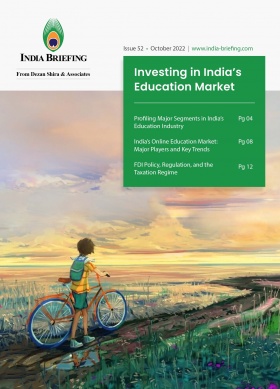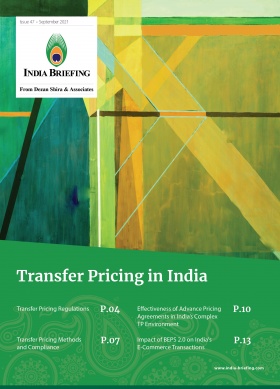MSMEs in India Now Eligible for Non-Tax Benefits for up to 3 Years After Reclassification
Micro, Small, and Medium Enterprises (MSMEs) in India can continue to avail their non-tax benefits for a period of one to three years after they have achieved upward growth in investment and/or turnover, which will classify them in a higher category.
This means that a ‘micro’ business making a larger turnover in a financial year and/or increasing investment in plant and machinery or equipment, which would see them graduate to become a ‘small’ business – that is, the upward category – can still avail non-tax benefits for up to three years after this change in their enterprise status.
The MSME Ministry made the announcement on October 18 and explained that the decision was taken “after due deliberations with MSME stakeholders… in line with the Aatma Nirbhar Bharat Abhiyan [Self-Reliant India goal].” India’s federal government is pursuing an aggressive policy to attract greater investments and private sector participation in the manufacturing sector, with the ambition to reduce India’s import dependencies, expand export-oriented production, and become more self-sufficient. MSME enterprises are a mainstay of the Indian economy and will be key to bolstering domestic industrial supply chains.
Why this extension matters
The extension by the ministry will give MSMEs – whose categories are revised upwards – a critical transition period to stabilize their growth, adjust operations strategy and accounting systems, and prepare for the additional compliance expectations of the new category. It is sought to encourage indigenous production as well as support entrepreneurship.
By non-tax benefits, the ministry is referring to various schemes of the Government, including public procurement policy, delayed payments, etc.
As per Minister of State for MSMEs Bhanu Pratap Singh Verma, the status of 93,048 micro enterprises were revised to small enterprises between July 2020 and July 2022, and 10,141 small enterprises scaled up to become medium enterprises during the same period.
However, experts note that this pace of scaling up business growth is not comparable to other major or developed economies. For example, the Financial Express spoke to experts and reported that in India, the graduation rate from micro to small enterprise is only 0.5 percent, while it is 20 percent in China and around 45-50 percent in developed countries. This won’t happen without supportive policies or necessary government handholding.
Larger context – India needs more MSMEs and value-added growth
As of media reporting in May 2022, there were about 63 million MSMEs in India – not all registered on the new Udyam portal (more information below) – accounting for nearly half of the country’s exports and 30 percent of GDP.
Over the last eight years, India’s federal and state governments have initiated several policies to revitalize the lagging manufacturing sector and launched reforms to make it easier to do business in the country. Examples of this include Make in India and Self-Reliant India initiatives, five-year industry development policies in the respective states, a liberal FDI environment, e-governance to streamline approvals and compliance, targeted incentive programs like the PLI schemes, and renewed push for free trade agreements.
Altogether, India hopes to advance its mature industries, so they achieve value-added growth and become part of global value chains.
Meanwhile, several industry stakeholders and business media are reporting that the government could expand its production-linked schemes (PLI) to more sectors, such as leather, bicycle, some vaccine materials, and certain telecom products. Currently, the PLI scheme, with a total budget outlay of about INR 2 trillion, applies to 14 sectors – mobile manufacturing and specified electronic components, medical devices, pharmaceutical, white goods – AC and LED, drones, telecom and networking products, electronics, food products, solar PV modules, specialty steel, textiles, ACC battery, automotive, etc.
Classification of MSME categories and new registration platform
Revision of MSME definition
On June 26, 2020, the Ministry of Micro, Small and Medium Enterprises notified new investment and turnover criteria for enterprises in India to classify under the category of micro, small and medium enterprises (MSMEs). The revised definition did away with the distinction between manufacturing and services enterprises.
Udyam Portal for MSME registration
The MSME Ministry launched the Udyam Registration Portal on July 1, 2020 following the revised definition of MSME enterprises.
The Udyam Portal is linked to the databases of the tax departments – CBDT (direct taxation) and GSTN (indirect tax regime). It is fully online, does not require any documentation, and is a step towards ease of doing business for MSMEs.
Between July 2020 and August 2022, there were 10 million MSMEs registered on the Udyam Portal. These enterprises collectively employ 73 million people, including 17 million women.
About Us
India Briefing is produced by Dezan Shira & Associates. The firm assists foreign investors throughout Asia from offices across the world, including in Delhi and Mumbai. Readers may write to india@dezshira.com for more support on doing business in in India.
We also maintain offices or have alliance partners assisting foreign investors in Indonesia, Singapore, Vietnam, Philippines, Malaysia, Thailand, Italy, Germany, and the United States, in addition to practices in Bangladesh and Russia.
- Previous Article An Overview of India’s Healthcare Ecosystem
- Next Article Investing in India’s Education Market – New Issue of India Briefing Magazine Out Now









